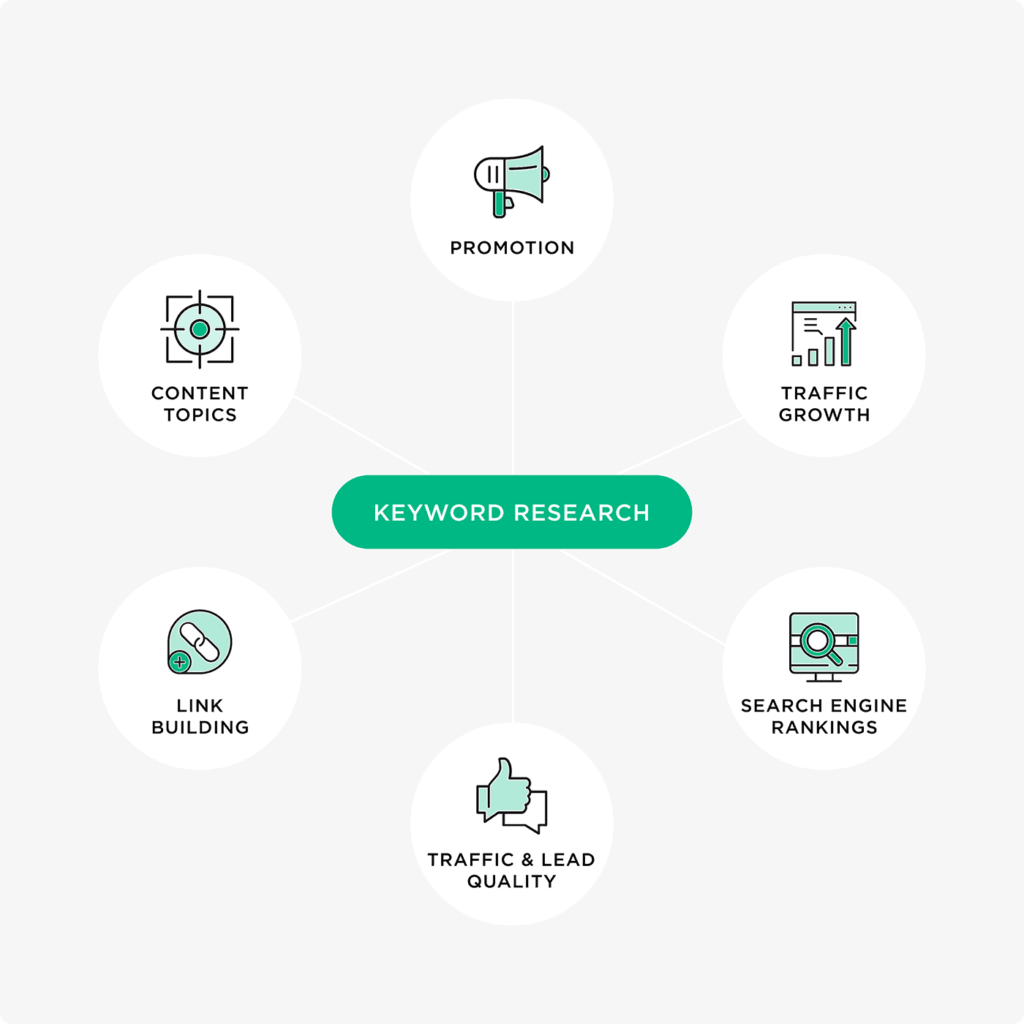Keyword Research – How to identify high-volume and relevant…
Here are some tips on how to identify high-volume and relevant keywords for your content:
Start with a list of relevant topics:
-
- What are your products or services about? What are your customers interested in? Once you have a list of topics, you can start to brainstorm keywords related to each one.
Use keyword research tools:
-
- There are a number of keyword research tools available that can help you find high-volume and relevant keywords. Some popular tools include Google Keyword Planner, Ahrefs, and SEMrush.
Consider the search intent:
-
- When people search for a keyword, what are they looking for? Are they looking for information, a product, or a service? It’s important to consider the search intent when choosing keywords for your content.
Use long-tail keywords:
-
- Long-tail keywords are more specific than short-tail keywords and tend to have lower search volume. However, they also tend to have less competition, which means it’s easier to rank for them.
Use a variety of keyword types:
- There are different types of keywords, including head terms, long-tail keywords, and LSI (latent semantic indexing) keywords. It’s important to use a variety of keyword types in your content to target a wider audience.
Once you’ve identified a list of high-volume and relevant keywords, you can start to use them in your content. Be sure to use them naturally and avoid keyword stuffing.

Here are some additional tips for using keywords in your content:
Use keywords in your title tag
The title tag is the most important part of your content for SEO. Be sure to include your target keywords in the title tag.
Use keywords in your meta descriptions
Meta descriptions are the short snippets of text that appear under your title tag in search engine results pages (SERPs). Be sure to include your target keywords in the meta description.
Use keywords throughout your content.
Don’t just stuff your keywords into the title tag and meta description. Use them throughout your content in a natural way.
Use keywords in your headers and subheadings.
Headers and subheadings are important for both SEO and readability. Be sure to include your target keywords in your headers and subheadings.
Use keywords in your images.
Images can also be used to improve your SEO. Be sure to include your target keywords in the alt text for your images.
By following these tips, you can identify high-volume and relevant keywords for your content and use them in a way that will help you improve your SEO.
